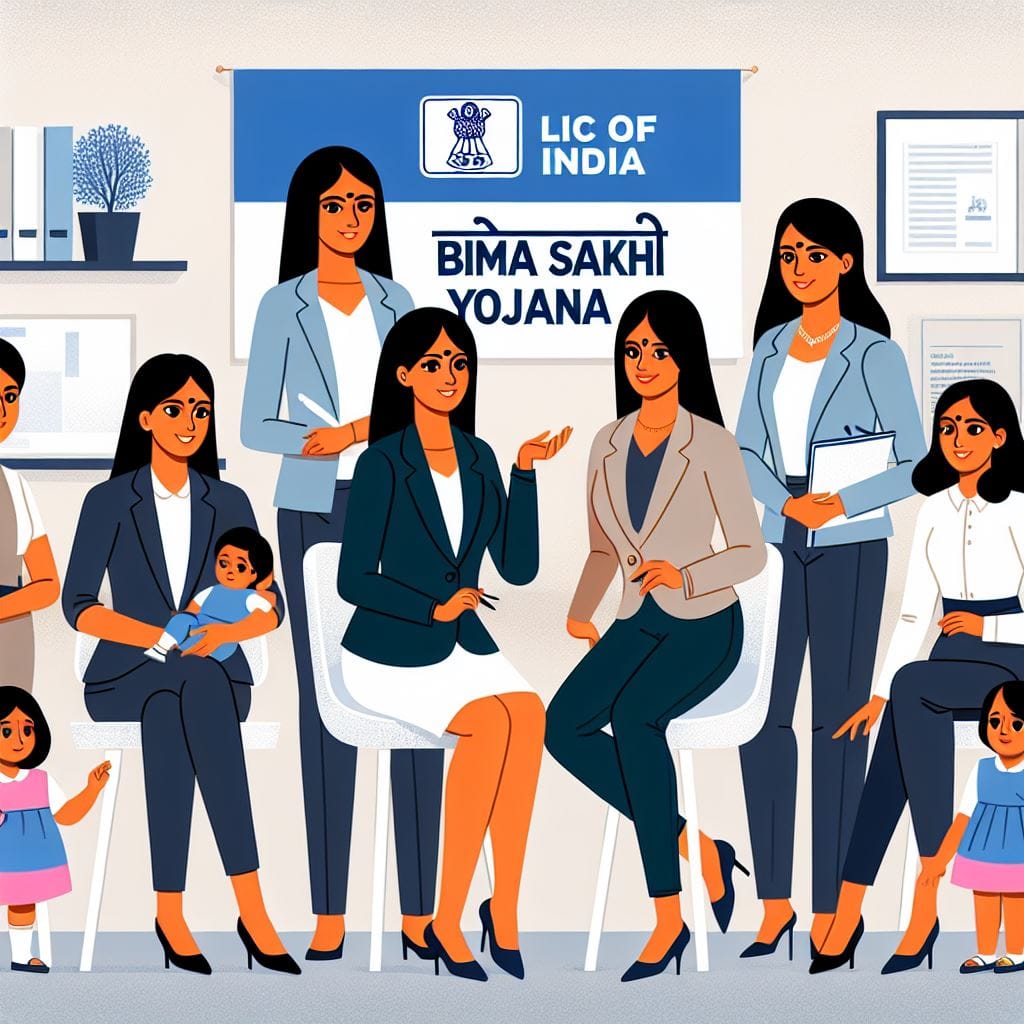Introduction
The Life Insurance Corporation of India (LIC) has been a cornerstone of the Indian insurance sector for decades. With a mission to provide life insurance to every citizen, LIC has introduced numerous schemes aimed at different segments of society. One such innovative initiative is the Bima Sakhi Yojana, designed to empower rural women by providing them with employment opportunities and financial independence. This scheme not only aims to enhance the economic status of women but also to promote financial literacy and inclusion in rural areas.
Background and Need for the Scheme
Rural women in India often face significant socio-economic challenges, including limited access to education, healthcare, and employment opportunities. These challenges are compounded by traditional gender roles and societal norms that restrict women’s participation in the workforce. Financial independence is crucial for the empowerment of women, as it enables them to make informed decisions, support their families, and contribute to the community. Recognizing these needs, the Indian government has launched various initiatives to promote women empowerment and financial inclusion. The Bima Sakhi Yojana by LIC is a step in this direction, aiming to provide rural women with the skills and opportunities needed to achieve financial independence.
Key Features of the Bima Sakhi Yojana
The Bima Sakhi Yojana is structured to provide comprehensive support to women, from training to financial incentives.
- Training and Employment: The program will train one lakh women across India to become LIC agents, known as Bima Sakhis. These women will receive training in the life insurance industry, learning about different policies, customer service, and financial planning. The training will equip them with the skills needed to sell insurance policies and promote financial literacy within their communities.
- Financial Support: To ensure that the women can focus on their training without financial stress, the scheme provides a monthly stipend. The stipend is structured as follows:
- ₹7,000 for the first year
- ₹6,000 for the second year
- ₹5,000 for the third year In addition to the stipend, Bima Sakhis will receive commissions on the policies they sell, providing them with a steady income.
- Eligibility Criteria: The scheme is open to women aged 18-70 years who have passed at least class 10. This broad eligibility criterion ensures that a large number of women can benefit from the scheme. The application process is straightforward, with LIC providing support to help women apply and get selected.
Implementation and Impact
The successful implementation of the Bima Sakhi Yojana relies on robust infrastructure and support from LIC.
- Training Centers and Infrastructure: LIC has established training centers across the country, equipped with the necessary facilities to provide high-quality training. These centers are staffed with experienced trainers who guide the women through the training process.
- Economic Impact: By providing women with employment opportunities, the Bima Sakhi Yojana has the potential to significantly boost the local economy. The income generated by Bima Sakhis will not only support their families but also contribute to the overall economic development of their communities.
- Social Impact: The scheme aims to empower women by improving their social status and giving them a voice in their communities. Successful Bima Sakhis can serve as role models, inspiring other women to pursue financial independence and break free from traditional gender roles.
Challenges and Solutions
While the Bima Sakhi Yojana has the potential to bring about significant positive change, it also faces several challenges.
- Challenges: Potential obstacles include cultural and societal barriers that may prevent women from participating in the scheme. Additionally, logistical challenges such as reaching remote areas and ensuring consistent training quality can pose difficulties.
- Solutions: To overcome these challenges, LIC can collaborate with local community organizations and government bodies to promote the scheme and provide support to the women. Awareness campaigns and community engagement activities can help change societal attitudes and encourage more women to join the program.
Future Prospects
The Bima Sakhi Yojana has a promising future, with plans for expansion and replication in other sectors.
- Expansion Plans: LIC aims to expand the scheme to cover more women and regions, ensuring that the benefits of the program reach a larger audience. This includes setting up more training centers and increasing the number of Bima Sakhis.
- Long-term Vision: The long-term vision of LIC is to create a network of empowered women who can drive financial inclusion and literacy in their communities. By providing women with the skills and opportunities needed to succeed, the Bima Sakhi Yojana aims to create a sustainable model of women empowerment.
- Replication Potential: The success of the Bima Sakhi Yojana can serve as a model for other sectors, encouraging similar initiatives aimed at empowering women and promoting financial inclusion.
Conclusion
The Bima Sakhi Yojana by LIC of India is a commendable initiative that addresses the socio-economic challenges faced by rural women. By providing training, financial support, and employment opportunities, the scheme empowers women to achieve financial independence and improve their social status. As the program expands and evolves, it has the potential to bring about significant positive change in the lives of rural women and their communities. Supporting such initiatives is crucial for promoting gender equality and financial inclusion in India.

